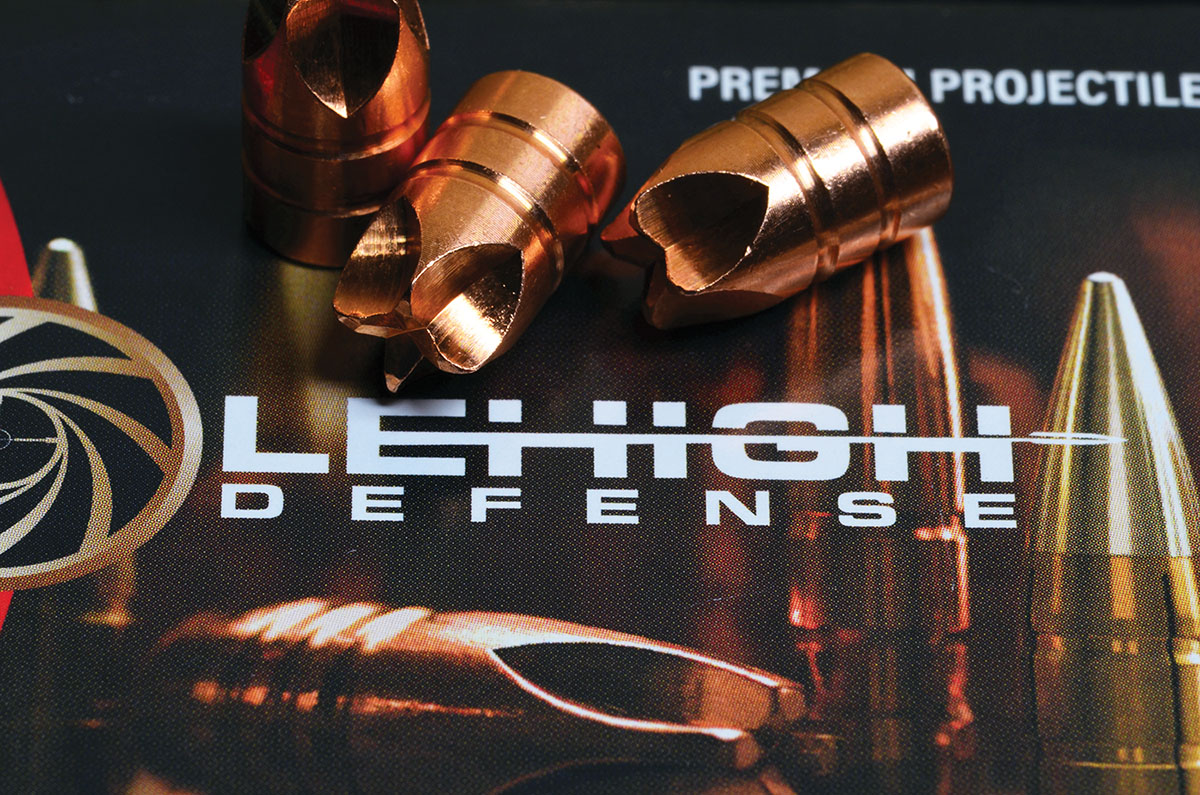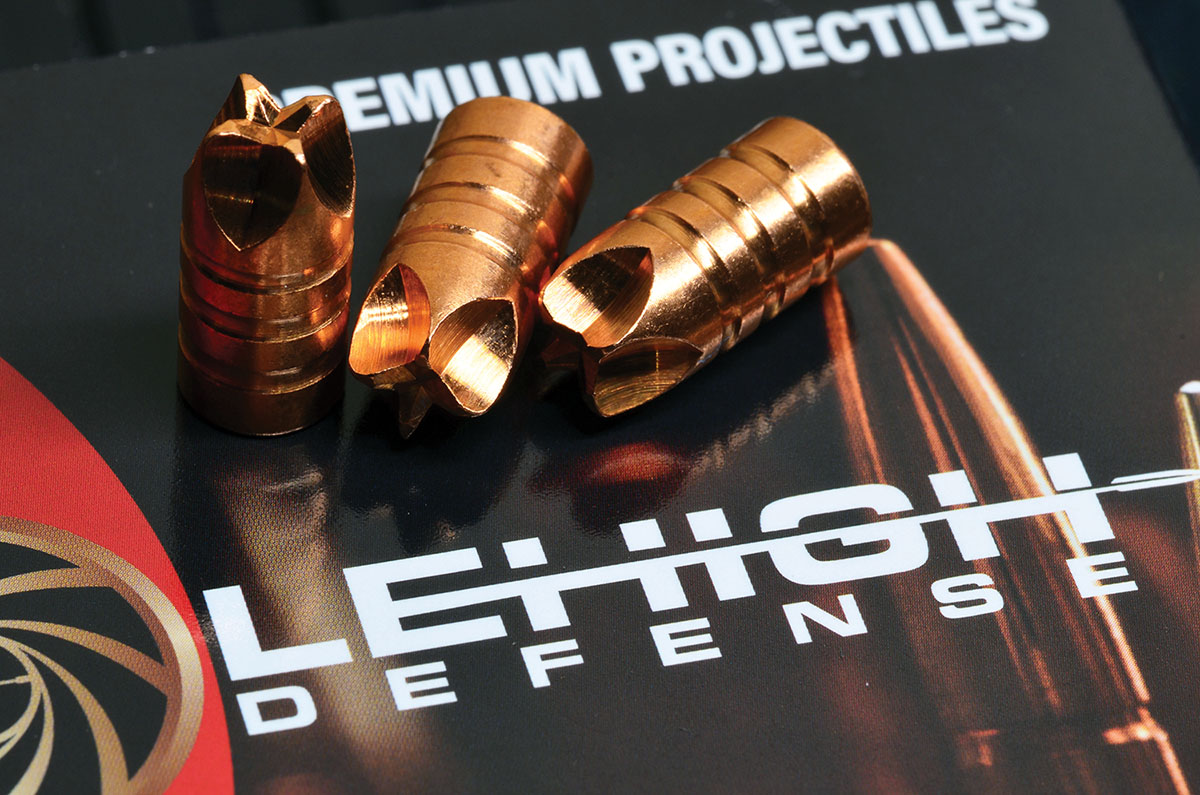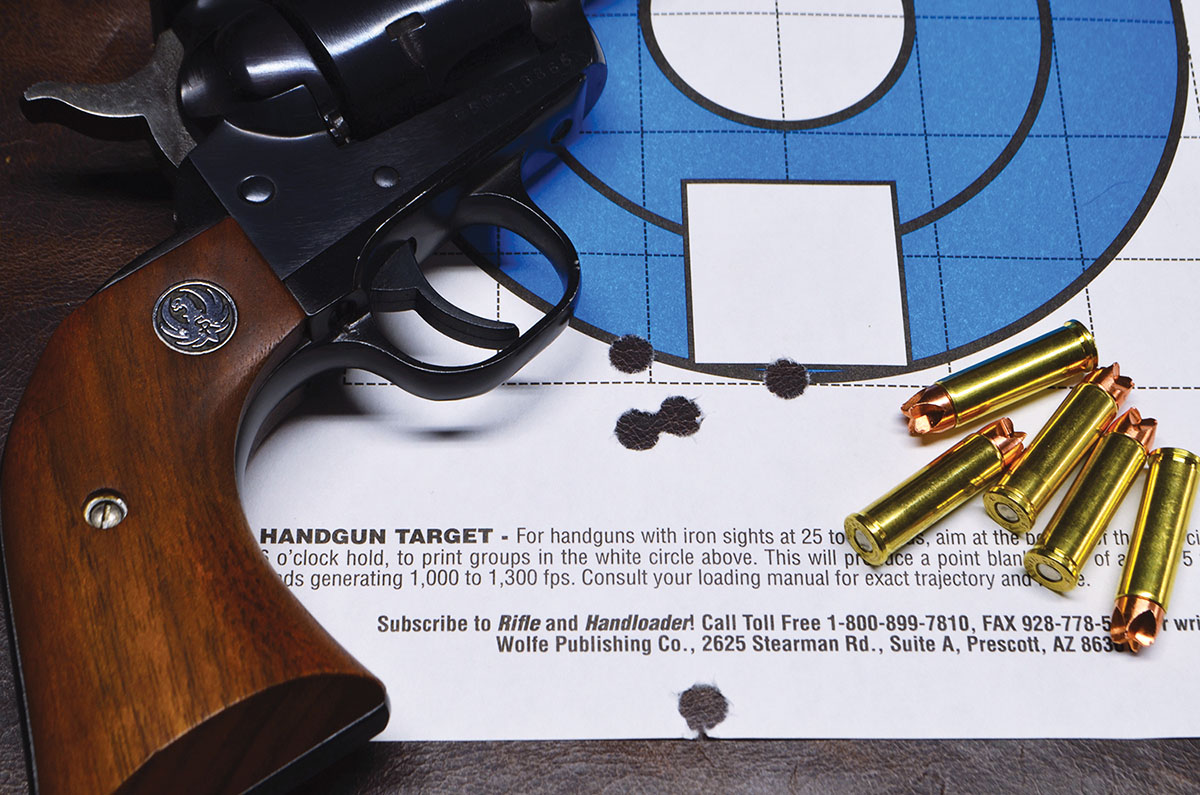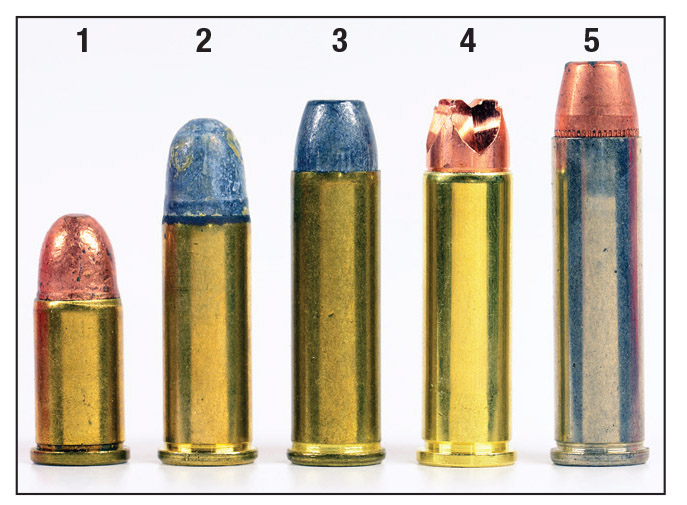A Deadly Load for the 32 H&R Magnum
At Last!
feature By: Terry Wieland | September, 24

It is, just as every critic has pointed out since its arrival in 1984, seriously underpowered. I acquired my Smith & Wesson Model 16-4, and a supply of Federal factory ammunition, just about the same time I got my first chronograph. It would be nice to say the chronograph looked apologetic as it flashed the bad news on its liquid crystal display, 10 feet in front of the shooting line, but such was not the case.


One would think one could handload ammunition for the 32 H&R that would easily shade the factory stuff, and of course you can, but here’s the problem: Compilers of loading manuals work under the same constraints, in terms of pressure, as ammunition companies. Some loads may deliver an improvement, but they can’t do much without exceeding the pressure limits.
Obviously, no sensible writer or magazine is going to recommend exceeding pressure-tested loads, and I am not going to do that here.
The 32 H&R Magnum was introduced in 1984 by Federal Cartridge, at the behest of Harrington & Richardson, a venerable company that supplied revolvers to the economy end of the market. It’s nothing more than the 32 S&W Long lengthened by a seventh of an inch. If you’re looking for a comparison, think of the 38 Special and 357 Magnum. Same deal.
In 1967, shortly after Handloader was launched, Ken Waters’ (“Pet Loads”) suggested that a more powerful 32 was a good idea, and while the 32 H&R Magnum did not exactly fulfill his wishes, it came close. He disliked calling it a “magnum” because it invited derision for what many saw as its low power – and truth to tell, the Federal factory ammunition from the 1980s was nothing to make you gasp with delight. But that’s beside the point.
When Waters wrote about the 32 H&R in 1986, he pronounced it a “grand cartridge,” and so it is. You just have to accept its limitations. You cannot turn it into a 357 Magnum and anyway, who would want to? The cartridge was given a curiously short maximum overall length (1.35 inches), which Waters attributed to the short cylinder in the original H&R revolver in which it was chambered. To a handloader, given the right bullets and knowledge of crimping, this is no problem at all.

There is a fairly wide range of revolvers available for the 32 H&R. After Harrington & Richardson itself, Smith & Wesson, Charter Arms, Dan Wesson and a couple of others got into the act. Ruger chambered it, first, in a reworked Single-Six, then later in a short run of the Blackhawk, combining it with a 32-20 cylinder in a gun that can best be described as a beast. Big, heavier than a 357 Magnum (being simply the standard Blackhawk with smaller holes and hence more steel), it hardly filled the bill for a single action, combining handiness with power and accuracy.

Various other companies produced 32 H&R Magnums (including, of course, Harrington & Richardson) but the one that grabbed my imagination was the Ruger Single-Six and I finally acquired one a couple of years ago. Mine has a 6½-inch barrel, whereas most others seem to be 5½ inches, but that’s fine with me.
Neither revolver is ideal for either a carry gun or self-defense, but that was not the goal in searching for a load that combined maximum terminal effectiveness with fine accuracy. I just figure that if I’m giving a gun house room, it should be capable of doing something other than punching holes in paper (unless, of course, that is its sole purpose).

It occurred to me that, with SAAMI-friendly loads and conventional bullets, no one had yet found a way to make all that happen. But what about unconventional bullets? In the last 30 to 40 years, independent bullet designers have come up with all sorts of innovative designs that lend some serious authority even to such diminutive rounds as the 32 ACP.
Four years ago, I used some Lehigh Defense bullets in an article on the 32 ACP. Lehigh also makes two bullets suitable for the 32 H&R, weighing 75 and 95 grains. The company seems to like shaping its bullets like a screwdriver head: The .311-inch 32 ACPs resemble a Robertson, while the .312-inch ones resemble a Phillips. The idea is that the four blades of the Phillips, when they hit flesh, will bore a permanent wound channel. Since their bullets are mono-metal (copper or some alloy thereof) and do not expand, there will be no loss of weight on impact, and hence maximum penetration.
These, I thought, should fulfill my purposes just fine. Now to find some load data.

Then, in an enlightened moment, I saw, in small print on the Lehigh box, a reference to LehighDefense.com for load data for the company’s bullets. Sure enough, they had a plethora of loads for both the 75- and 95-grain bullets, most of which called for powders I already had on the shelf. This was a good thing because several of the others were listed as “out of stock.”
So far, so good, but there was one hitch – Lehigh bullets ain’t cheap. Including shipping from Graf & Sons, you’re looking at a little more than a buck a bullet. With that economic constraint, I decided to limit velocity tests to three rounds from each gun. Then, with those results in hand, I would load 10 rounds, each of the most promising in each bullet weight and shoot some groups.
Based on available powders, there were five usable loads for the 75-grain and seven for the 95 (see accompanying table). After a little experimenting, I felt safe going with the maximum charge listed for each load and did not encounter a single difficulty or indication of excessive pressure.

Undoubtedly, the most promising 75-grain load in both guns was with Accurate No. 7 – highest velocity and lowest extreme spread. Accurate No. 5 was almost as good on both counts, and my third choice for further exploration was Unique, as much for old times’ sake as anything else.
In the 95-grain loads, Alliant 2400 left noticeable unburned powder with both guns, as well as delivering the lowest velocities, so it was gone.
Again, with the heavier bullet, Accurate No. 7 was clearly superior with both revolvers, and HS-6 looked good as well.
CFE Pistol was impressive in the Smith & Wesson, so that became my third load for that gun, while True Blue was promising in the Ruger.
Based on considerable experience, I believe that if you come out of an exercise like this with one gilt-edged load for each gun, you’re doing well. The accompanying table tells the tale in both inches and feet per second, but the stark figures require a little explanation.
First, the group sizes ranged from excellent to abysmal, and though the loads were ballistically similar, the group centers were all over the map – some right on point of aim, some low, some high, some indeterminate because I didn’t know where all of the bullets went. This is unusual, but it emphasizes the need to develop a load and then sight in the gun for that load.
Overall, the Ruger outperformed the Smith & Wesson with all loads, which was a surprise.

The Ruger’s performance with the 95-grain loads was uniformly good. I would happily shoot any of the three, but HS-6 was a real keeper.
The Smith & Wesson, to my disappointment, didn’t seem to like any of them particularly, but as with the Ruger, the 75-grain, A-7 load was the best. The 95-grain with CFE Pistol was actually a 1.4-inch, four-shot group enlarged by a flyer. Either should be satisfactory.
To make sure either of the guns is ready should I be besieged by armadillos (don’t laugh!) I’ll load more of their favorites and get them properly sighted in.
I cannot attest to the Lehigh bullets’ effectiveness on game at this point, nor report on any testing in penetration boxes. What I can say, though – and this is not scientific – is that random shots at chunks of limestone and dead trees have resulted in some very gratifying showers of shards, chips and dust, where shooting the same targets with my usual lead semiwadcutters in the 32 H&R generally result in a tidy hole with no dramatics.
Whether all this amounts to turning my 32 H&R Magnum revolvers into seriously useful guns to have around, who knows? But it’s a good start.
.jpg)


